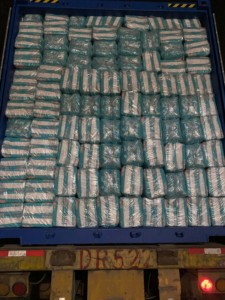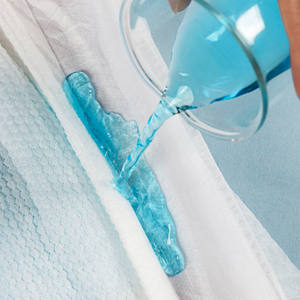(7095 products available)































































































































































































































































Private label diapers are a convenient and cost-effective means of providing quality baby care products. Private label brands typically offer diapers on par with national brands while providing competitive pricing. Retailers and other businesses can customize packaging and branding to suit their needs and target a specific customer base. There are different types of private label diapers, which include:
Cloth diapers
Reusable cloth diapers are made from natural fibers like cotton, bamboo, or hemp. They are soft and gentle on a baby's skin. Cloth diapers are eco-friendly and do not contain any harsh chemicals. These private label diapers are perfect for those environmentally conscious parents looking for sustainable alternatives. Cloth diapers are highly absorbent and contain multiple layers of fabric to wick moisture away from the baby's skin. They are also adjustable and can grow with the baby. Cloth diapers can be used with various stylish and functional diaper covers.
Disposable diapers
Disposable private label diapers are convenient and highly absorbent. They have super absorbent gel cores that lock away moisture, keeping the baby's skin dry. Disposable diapers are available in various sizes, from newborn to potty-trained toddlers. They have soft, stretchy waistband and leg cuffs that provide a comfortable fit. Some disposable diapers come with wetness indicators that change color when the diaper is wet, making it easier for parents to know when to change the diaper.
Training pants
These are pull-up style diapers designed for toddlers who are in the process of potty training. Training pants are easy for kids to pull up and down, which helps them learn to use the potty independently. They are usually more absorbent than regular diapers, providing just enough protection for accidents during potty training. Private label training pants are available in various fun colors and designs, featuring popular cartoon characters that toddlers love.
Swim diapers
Swim diapers are designed to be worn in water. They are made from soft, stretchy material that fits snugly around the legs and waist to prevent leaks. Swim diapers have no absorbent padding like regular diapers, as this would cause the diaper to become heavy and drag the baby down in the pool. Swim diapers are perfect for those parents who take their babies to swim classes or the beach.
Manufacturers provide instructions on how to use private label diapers for best results. Here is a step-by-step guide on how to use them.
Prepare the baby
Lay the baby on their back on a flat surface. Their bottom should be clean and dry. Gently clean and dry the baby if they are not. Remove the old diaper if they are wearing one. Keep the baby comfortable and happy during the process.
Open the new diaper
Tear off the packaging of the new diaper. Hold it with the soft padding facing up. Ensure the back part with the leak guard is higher than the front.
Position the diaper
Slide the back of the diaper under the baby. Get it under the baby’s bottom while they are still lying on their back. If the baby is older, they may be on their hands and knees. Slide a hand under their body and put the diaper.
Put the diaper on
Gently pull the front part of the diaper up between the baby’s legs. Aim it at the baby’s tummy. Make sure the padding is flat against their skin. So, it does not rub against their thighs or private parts.
Fasten the diaper
Take the adhesive tabs on each side of the diaper. Pull the tabs toward the front. Fasten them to the front panel. Adjust the fit by pulling the edges until it snugly fits the baby. Be careful not to pull it too tightly.
Check the fit
Ensure the diaper is snug around the baby’s waist and thighs. No liquid or solid waste should leak. Place two fingers between the diaper and the baby’s waist. If it is too tight, take it off and put on a bigger size.
Dispose of the old diaper
Carefully remove the old diaper. Bring the front part down and fold it over the padding. Then, roll it up. Use the sticky tabs to seal the roll. Throw it in the diaper pail or trash.
Clean up
Wipe the baby’s skin with the old diaper. Use a wet wipe to clean their bottom and private parts. Always wipe from front to back to stop spreading urine. Check their skin for rashes. Dry the skin well before putting on a new diaper.
Private label diapers are safe for babies. Manufacturers produce them according to the highest industry standards. They also test them for harmful substances. The diapers have no toxic chemicals that can hurt a baby. In addition, the products have CE markings. The marking shows that the diapers meet the required European safety standards.
Absorbency:
Diapers are designed to absorb and retain moisture away from the baby's skin. This helps to prevent diaper rash and keep the baby comfortable.
Leakage Protection:
With elasticated leg cuffs and waistbands, these diapers help create a snug fit around the baby's legs and waist. This helps to prevent any leaks from escaping the diaper and onto the baby's clothes or bedding.
Wetness Indicator:
Some diapers come with a wetness indicator line that changes color when the diaper is wet. This feature helps parents know when it's time for a diaper change without having to open it and check inside, making it convenient and easy to maintain the baby's dryness.
Soft lining:
This helps to keep the baby's skin dry and prevent diaper rash. The lining is usually made of gentle, non-woven fabric that is soft to the touch and doesn't cause irritation to the baby's delicate skin.
Breathable Materials:
These are made from materials that allow air circulation within the diaper. This helps to reduce heat and moisture buildup inside the diaper, preventing irritation and promoting healthier skin. Breathable materials often include laminated nonwoven or microporous films that provide ventilation without compromising absorbency or leakage protection.
Stretchy Sides:
These sides of the diaper provide a perfect fit around the baby's waist. This ensures maximum comfort for the baby and reduces the risk of leaks. Stretchy sides are usually made of elasticized or stretchy fabrics that can easily adapt to different body shapes and movements.
Contoured shape:
Private label diapers have a contoured shape that fits snugly around the baby's bottom and between the legs. This shape allows for freedom of movement and comfort for the baby.
Adhesive tabs:
These diapers have strong and secure adhesive tabs that fasten the diaper around the baby. These tabs are stretchy and easy to adjust, ensuring a comfortable fit for every baby and avoiding any leakage from the diaper.
Q1: Can suppliers customize the packaging of the diapers?
A1: Yes. Suppliers allow packaging customization. Businesses can avail of their brand logo or name on the packaging. This helps companies to have a strong brand presence. Some suppliers also offer packaging options that suit end users' preferences.
Q2: What are the trends in private label diaper products?
A2: Some trends are eco-friendly diapers, premium diaper products, and smart diaper products. Other trends include packaged wipes with diapers and customizable diapers. Business buyers should be aware of these trends to meet their customers' needs.
Q3: What factors affect the cost of private label diapers?
A3: The factors include the type of diaper, the material used, and the packaging. The cost also depends on the size and the absorbency. Customization options may also affect the overall cost.
Q4: What is the average order delivery time?
A4: The average order delivery time is between 15 to 30 days. This depends on the order volume and the degree of customization. Also, the manufacturer's production schedule can affect the delivery time.